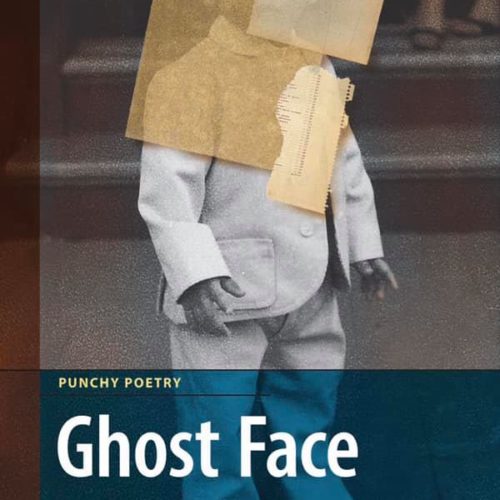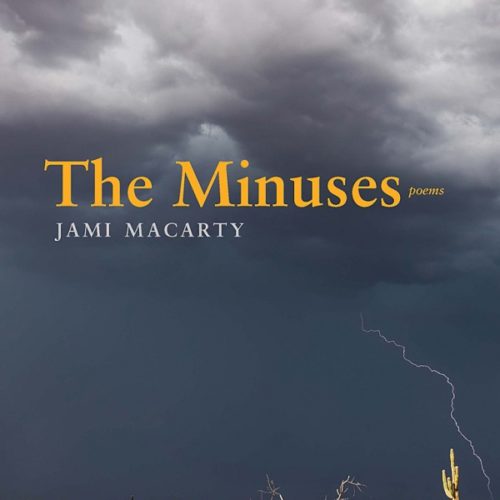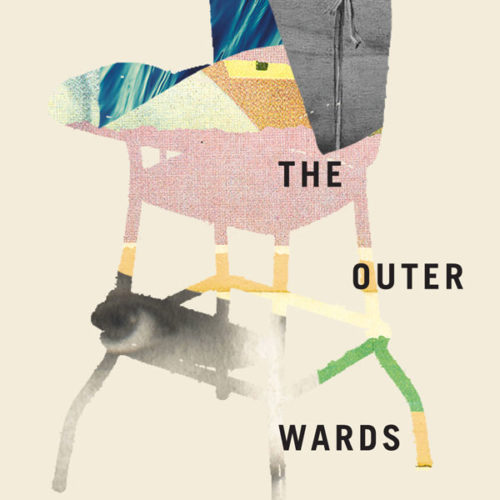A Conversation with Canisia Lubrin
Author of THE DYZGRAPHXST
Interview by Rosie Long Decter
Canisia Lubrin’s debut book of poetry, Voodoo Hypothesis, was longlisted for the Gerald Lambert Award and the Pat Lowther Award. Last year, she released her follow-up collection, The Dyzgraphxst, a lyrical and cyclical exploration of the self as collective. Structured in seven acts, the book follows the dreams and returns of a figure called Jejune, as they intertwine with nuclear bomb tests and oil spills, capitalist and colonialist catastrophes. With intricate, polyphonic language Lubrin navigates the fragmented and multiple experiences of diaspora, the search for home and homeland: “how many ways can you disappear / a people, dignity by dignity, slant / word by slant word.” In The Dyzgraphxst, material and linguistic, individual and plural are inseparable from one another. Amidst violence, there is a drift toward life, too: “all the young who lie annexing / and awake & dreaming, who know / what trouble is this century / while here is a place / & we can admit to love it.”
We spoke with Lubrin via email about form, selfhood, and musicality in The Dyzgraphxst, as well as what’s coming next.
Rosie Long Decter (RLD): How did The Dyzgraphxst emerge for you as a project? Did you start with the concept or structure, and then begin writing? Or did that come through the writing?
Canisia Lubrin (CL): The latter. The Dyzgraphxst came together in a kind of apocryphal moment. When I had returned to a few commissioned poems and I noticed their convergences, a similar subject or through line, a thematic core, let us say—it dawned on me that a book-length work was taking shape. By the end of the first draft, where I had followed an impulse to examine the implicit value in the way that language works, and in the unique knowledges that genre can lead to, I found myself in the middle of an open debate with myself about the nature of the self, with language as a prism. But there is also the philosophical, political, and historical materials
that all my writing works through. The theme (and title) came together in my reading of Christina Sharpe’s In The Wake: On Blackness and Being. It clarified some things I had been thinking about for a long while, things that, in hindsight, were already part of my own sensibilities about the world and the manner(s) of modern life, post chattel slavery.
RLD: Where did the idea to structure it in dramatic acts come from? What did that structure enable for you?
CL: The concept led to the form. The structure follows the form. The book’s philosophical underpinning made sense in the mode of direct address. I wanted primarily to evoke an awareness of movement through an entire life. I borrowed from theatre its techniques for making usually combustive and expansive methods of dialogue and physical interaction work like a singularity. It’s a book about interiority but I did not want this to be overly self-conscious, insular, nor self- indulgent. So, the core approximation of The Dyzgraphxst is a triptych of dramatic moves that end up cycled through the seven acts of the book.
It’s really three main acts that I split using a kind of formal mitosis because the acts are the sites of the speaker’s embodied concerns (the self, the world, and the world’s orders). Then I added a 7th act to complicate the symmetry, to account for or gesture toward the unknown, the as-yet, the chaotic nature of the imagination. I wanted to suggest an elaboration of a birth to end-of-life movement, as far as a poetic maneuver called voice or voices could carry such a thing. The sense that the self is static or that the self can become a static reserve of conditions is what I wanted to put under immense pressure. Though that could mean many things, metaphorically and literally. That is why the book takes the form of dramatic acts, and why repetition signals actual shifts in address and occasional shifts in structure and syntax and music, and, on a more granular level, voice. That’s where everything is at stake: what are the opportunities for transformation we might hold within us and in relation to one another and the world— particularly in the vulnerable world we have?
RLD: The self, in this book, is multiple. The speaker (“I” and “i”) is split into three in the Dramatis Personae, and addresses an “unnavigable self” called Jejune. Who is Jejune to you? Or, what does the voice of Jejune encompass/collect/connect?
CL: As the book’s description states, there is an investigation of selfhood or personhood happening at the heart of the book’s principal drama. There’s a kind of nested structure to the poem, where the lyric address is splintered to shift perspectives from first, to second, to third person using a singular “I” (which is the core of lyric address). In that way, the terms of address become manifold but the “being” that grounds this concretely is Jejune (whom I call the voice of the book, rather than the protagonist, or muse, like in the traditional epic poem).
An aside: The ocean is actually given this protagonist status because the spirit/energy of the poem is tidal, is oceanic. There’s a more direct connection, of course, between the ocean and my history as a descendant of enslaved Black people. So, it is part of the theme, too. If you’ve read Zong!, or A Map to the Door of No Return, or In The Wake,
or Lose Your Mother, or Kamau Brathwaite’s Middle Passages, then you know. Jejune is the self, the site of the interrogation. Jejune is also the place where the changing address to the self (which is to say, the world, peopled with selves) is refracted. The intention was to enable the reader to participate in the reading. This is meant to interrupt the hierarchy of the lyric address, which I think is also similar in structure, to the Eurocentric, capitalist, individualist orders of our present world. I don’t like this idea that the reader is a static object into which something called “comprehension” is poured. That transactional idea of the reader strikes me as inadequate, at least, many times, wrong. There’s a more generous, generative, imaginative view of the reader that I find way more creative and nutritive. The reader brings a lot to reading: their experiences, their beliefs, the everydayness of their living, and, I, for one, would like to see more generosity given to that fact when people talk about reading and books, and what that interaction makes possible.
Back to your question: Jejune is an enactment of the self-addressing-the-self-about-the-self in the world. But I did not want this to be merely a solipsistic exercise, like I’ve said. Certainly, I did not want it to be lost that the poem is an act of imagination where our experiences of this life and world rest on the availability of conscious creativities, at once personal and collective. Natalie Diaz wrote that The Dyzgraphxst is an invitation to the reader to investigate themselves, to ask who am I, who are you, who are we in relation to the world we’d like to live in. That’s precise. For me, Jejune is a creole figure. A shapeshifter, gesturing to the inestimably miraculous persistence of Black people in a world that deems Black life negligible. And still, as a work of art, the poem has to be dynamic, still has to hold the features of poetry, and be enjoyable, even as it creates obvious discomforts.
RLD: During a February event with Klara du Plessis on the long poem, you spoke about poetry using the language of sound: poetry as a process of sounding out histories or philosophies. In the book, too, music plays an important role: “someone once told me the story-of this dream / or just part of the riff”. What, for you, is the relationship between sound and text? Why is it useful to think of poetry in terms of sound?
CL: I don’t think I separate sound from language. Language is sound to me. And when I say sound, I mean both the aural and the physiological “vibrations” of sound waves through the prism and volume of ways we imagine. The polyrhythmic, metamorphic qualities of our preverbal life come to rest in something called logic and sense. The line you quote from the dream and return sequence explicitly references music, but I’m talking about poetry as the thing it always was, the oral forms of our earliest expressions that eventually lead to writing. Sound as a sensorial phenomenon; as way-making through meaning and our ability to screw up and stumble against our own limits.
I often think that language is the way the material world has made perceptible its solidarity with our species, how it has enabled a linguistic form of order and experience out of chaos. On a more physiological level, I think sound is what enables our participation in the poem. That is, our capacity to feel. That can happen without anything having to enter the ears, lest anyone think I’m being ableist. Otherwise, we could definitively say that the page is static, that the poem is a static object. But we know that the thing within which we are overcome, the thing that washes over us when we let a poem enter us, when we ourselves enter a poem is the astonishment that something so familiar to us as words, as language, and images, and symbols, and speech, is the power of sound moving us beyond the words themselves into the active spaces of our imagination.
RLD: At that same event you also said that your work is oriented towards “inventing and remaking and moving away from the deadening effects of oppression and colonialism.” I wonder how you conceptualize that process in relation to this book: what does inventing and remaking look like (or sound like) in The Dyzgraphxst?
CL: You might have a sense of this that you may want to express—or not. There’s things a poet shares and things a poet needs to do for herself, because the need is there and because it is simply part of the work a poet does in order to write. You might recall that I had made this comment about invention in relation to my particular Black diasporic positioning, the aesthetics, traditions and modes of artistic creation that form this legacy. The act of creolization, in particular, is always one of invention, or at least one that follows invention’s modes, impetuses and practices. This is one way to characterize the long history of practices where my work fits in. Again, when I express the need to think through the lens of invention and a remaking of the world, I am talking broadly about the world that is actual, not the dangerous fantasy of progress that forms the foundation of the modern world’s narcissistic vision of itself from the centers or power and control. I am saying that the challenge for imagining a better world through art is a legitimate response to the artist’s responsibility to work through the materials of the world. I’m talking about art that attends to climate catastrophe, the future of this planet at its most precarious in modern history, and the co-dependent nature of the planet’s life forms, where humans fit in this matrix, where the vile realities of colonialism and hierarchic ownership are taken up. These are nods in the direction of forms that take up the challenge to imagine an otherwise world.
One must risk dispelling the cynicism that art can have no serious impact on the real world. This, as we know, is ahistorical cop-outness. Tell me how many times books have imagined things that later came to pass. Talismans, books. Black and Indigenous and other minoritized writers (and others, if you look at Adrienne Rich’s anti-capitalist, anti- colonial works, for example) make up the long-historied practice of works that imagine toward invention. Invention is not a free-flowing concept that simply gazes at itself, in my estimation, it is things that extend into each other; it is art as a medium through which the world is its vastness and complexity and wonder and fragility, can enter into a kind of collective practice against harm. The problem is this often gets distorted by disparagers into moralist arguments that lock art into a kind of limited frame. I can’t tell anyone else what to do with their art. My point of departure here is that art can help us envision. Art is used all the time for propaganda and these attempts are largely successful. The transformative potential of art is as plentiful as the cosmos and I would rather not be cynical about that.
RLD: What has your writing practice been like since the release of The Dyzgraphxst? What have you been reading and/or writing; where have you been finding inspiration?
CL: Inspiration, as it is usually thought of, is not a significant part of my process. I follow questions, curiosities; I respond to the world, my life, the ordinary and not. So, I suppose you can say that I am in language as I am in life: curious about us, the world, how things work and don’t work. I’m working on a collection of short stories, soon
forthcoming, called Code Noir. I have some essays accumulating a form. And I always have more poetry happening. But the stories are my current preoccupations.
I’ve been reading a lot more than in the early days of the pandemic, which is when The Dyzgraphxst was released. I think everyone should read On Property by Rinaldo Walcott, an urgent book, if there ever was one. In addition to a bunch of collected volumes, I’ve greatly enjoyed poetry by Aricka Foreman, Natalie Diaz, Vievee Francis, Aracelis Girmay, Martha Sprackland, Joy Priest, Claire Harris, Rachel Eliza Griffiths, Asiya Wadud, Victoria Adukwei Bulley. Fiction by Souvankham Thammavongsa, Kawai Washburn, Fernanda Melchor, Genki Ferguson, Monique Roffey. Essays by June Jordan, Aimé Césaire, Michel-Rolph Trouillot, Christina Sharpe, Lydia Davis, Sylvia Wynter, Dionne Brand, Toni Morrison. I’m anticipating readingCraft in the Real World [by Matthew Salesses]. And, always, always in the room with Dionne Brand and Toni Morrison. Always.
Authors’ Bio
Canisia Lubrin is a writer, critic, editor and teacher with work appearing and forthcoming in Poetry London, Brick, Jewish Currents, Poets.org, Poetry, The Rumpus, Vallum, The Yale Review, The Capilano Review, and many other venues. Her books are augur (Gap Riot Press, 2017), finalist for the pb Nichol chapbook award, Voodoo Hypothesis (Wolsak & Wynn, 2017), named a CBC Best Book and Gerald Lampert, Pat Lowther and Raymond Souster finalist, and The Dyzgraphxst (M&S, 2020), winner of the 2021 OCM Bocas Prize for Caribbean Literature in the poetry category, also named a book of the year by Quill & Quire, CBC, Winnipeg Free Press, Rebel Women in Lit, among others. Her debut fiction, Code Noir, is forthcoming from Knopf Canada. She is Poetry Editor at McClelland & Stewart. She received a 2021 Windham-Campbell Prize for poetry. Lubrin was born in St. Lucia and now lives in Canada.
Rosie Long Decter is a writer and musician based in Montreal. Her work has appeared in Maisonneuve, Peach Mag, The New Quarterly, THIS, Bright Wall/Dark Room, and elsewhere. Her band Bodywash released their debut record, Comforter, in 2019.


